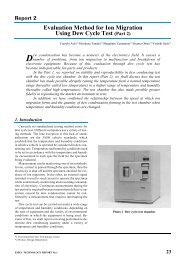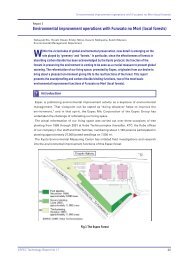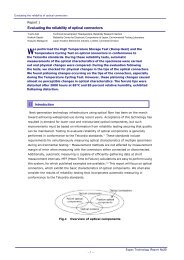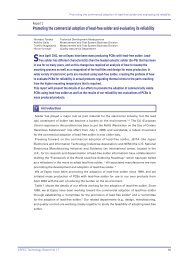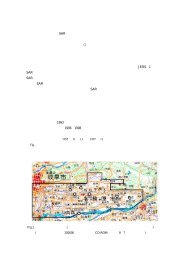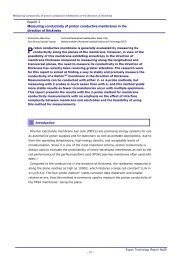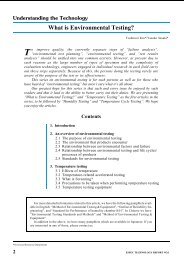download
download
download
Create successful ePaper yourself
Turn your PDF publications into a flip-book with our unique Google optimized e-Paper software.
Measuring conductivity of proton conductive membranes in the direction of thickness<br />
Report 2<br />
Measuring conductivity of proton conductive membranes in the<br />
direction of thickness<br />
Shuhua Ma, Akiko Kuse Technical Development Headquarters, Espec Corp.<br />
Zyun Siroma, Kazuaki Yasuda National Institute of Advanced Industrial Science and Technology (AIST)<br />
P<br />
roton conductive membrane is generally evaluated by measuring its<br />
conductivity along the planes of the membrane. However, in view of the<br />
possibility of this membrane exhibiting anisotropy in the direction of<br />
membrane thickness compared to measuring along the longitudinal and<br />
transversal planes, the need to measure its conductivity in the direction of<br />
thickness has recently been receiving greater attention. The research work<br />
for this report is aimed at finding a way to stably and precisely measure the<br />
conductivity of a Nafion ®1) membrane in the direction of thickness.<br />
Measurements can be conducted with either 2- or 4-probe methods, but<br />
measuring with 2 probes is much easier than with 4, and this method yields<br />
more stable results as fewer inconsistencies occur with multiple specimens.<br />
This report presents the results with the 2-probe method for membrane<br />
conductivity measurements with an emphasis on the effect of interface<br />
complexity between membrane and electrodes and the feasibility of using<br />
this method for measurements.<br />
1<br />
Polymer electrolyte membrane fuel cells (PEFCs) are promising energy systems for use<br />
as automotive power supplies and for stationary as well as portable applications, due to<br />
their low operating temperature, high energy density, and acceptable levels of<br />
miniaturization. Since it is one of the most important criteria, proton conductivity is<br />
always used to evaluate the practicability of newly-developed membranes as well as the<br />
cell performance of the perfluorosulfonic acid (PFSA) polymer membrane often used with<br />
PEFC. 2)<br />
Introduction<br />
Compared to the conductivity in the direction of thickness, the resistance measured in<br />
along the plane reaches as high as 1000Ω, which features a large cell constant *1 (L/A in<br />
σ=L/(R·A)). The four-probe method *2 yields narrower data dispersion and smaller<br />
relative errors, thus this method is commonly used to measure the proton conductivity of<br />
the PFSA membrane *3 along the plane.<br />
- 12 -<br />
Espec Technology Report No20



